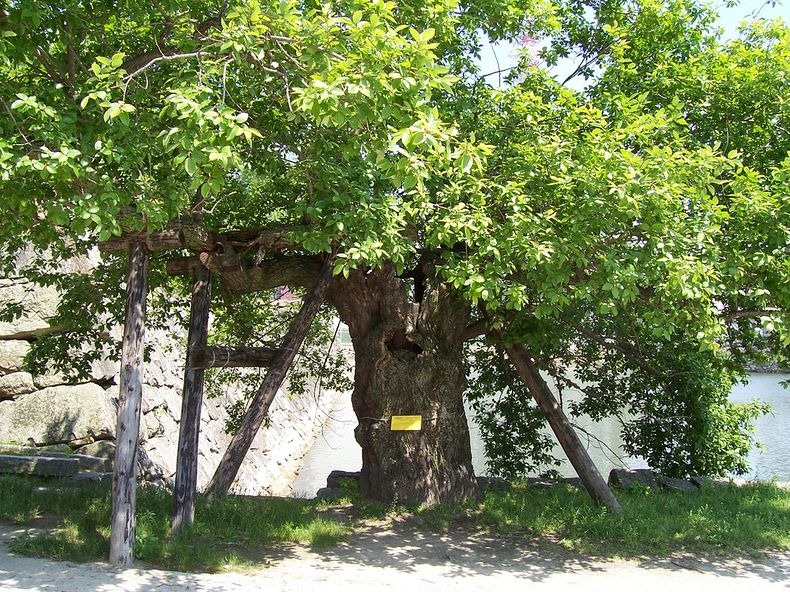Today, over six decades after the atomic bomb, Hiroshima is a green and vibrant modern city. Many of the trees that were planted in the city after the war were gifts from overseas donors and donors from other parts of Japan. However, hundreds of trees that are still standing today were actually around the vicinity when the bomb went off. Though broken and badly charred, they survived and soon were healthy again.

After the war, many of those trees were preserved in 55 locations within a 2km radius of the hypocenter. Today, they are officially registered as A-bombed trees. Each A-bombed tree is called a "Hibaku Jumoku" - survivor tree, and is identified by a name plate. According to the City of Hiroshima, there are about 170 survivor trees representing 32 different species.
The tree closest to the hypocenter is a Weeping Willow, which stands 370 meters away from the blast. Although the original tree was toppled by the bomb, its roots survived and new buds sprouted at the base. Another Weeping Willow stands near Seishonen and the Baseball Stadium, 450 meters away from ground zero. A partial list of A-bomb survivors can be found on www.lang-arts.com/survivors/index.html.
The trees are located all over on the grounds of public buildings, temples, and shrines, and are under the care of the Hiroshima government. Seeds and seedlings from A-bombed trees are shared by the city and Hiroshima citizens with people in Japan and overseas, and these new trees are now growing in places all over the world.

One of the two pillars of the Sanno Shrine Torii was toppled by the A-bomb blast. The blast also blew away the branches and leaves of the two camphor trees in the precincts of the Shrine, which were then more than 500 years old. At that time, it was feared that the trees might wither and die; however, they gradually began to recover, and now are thickly covered with leaves and branches.

Effect of the blast on a plant






Source
